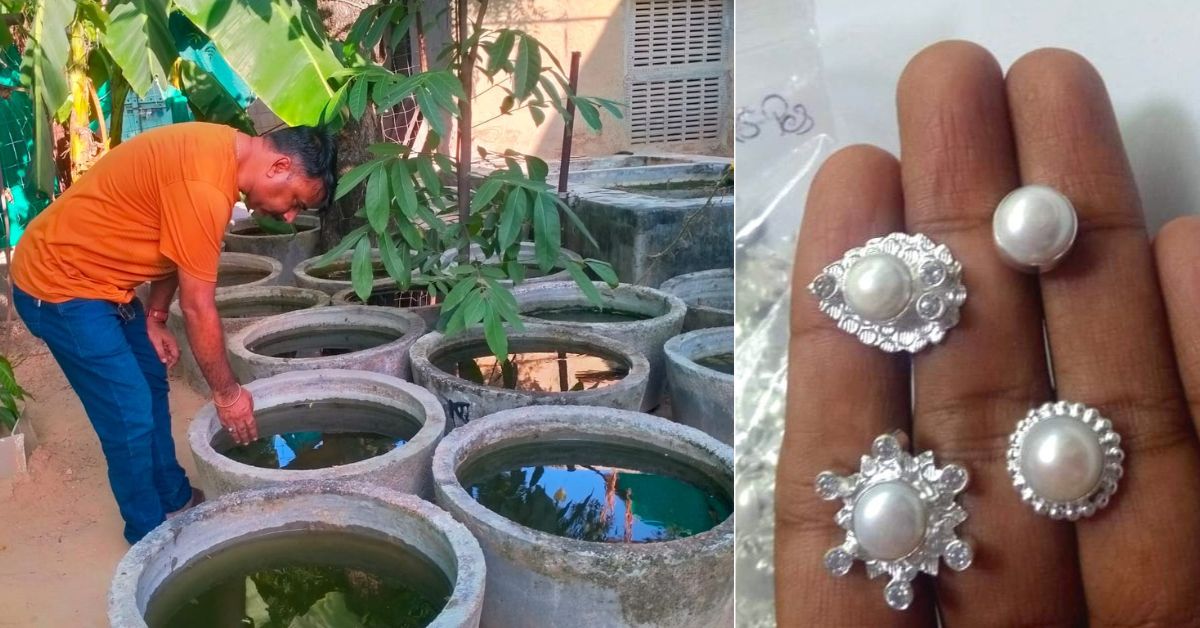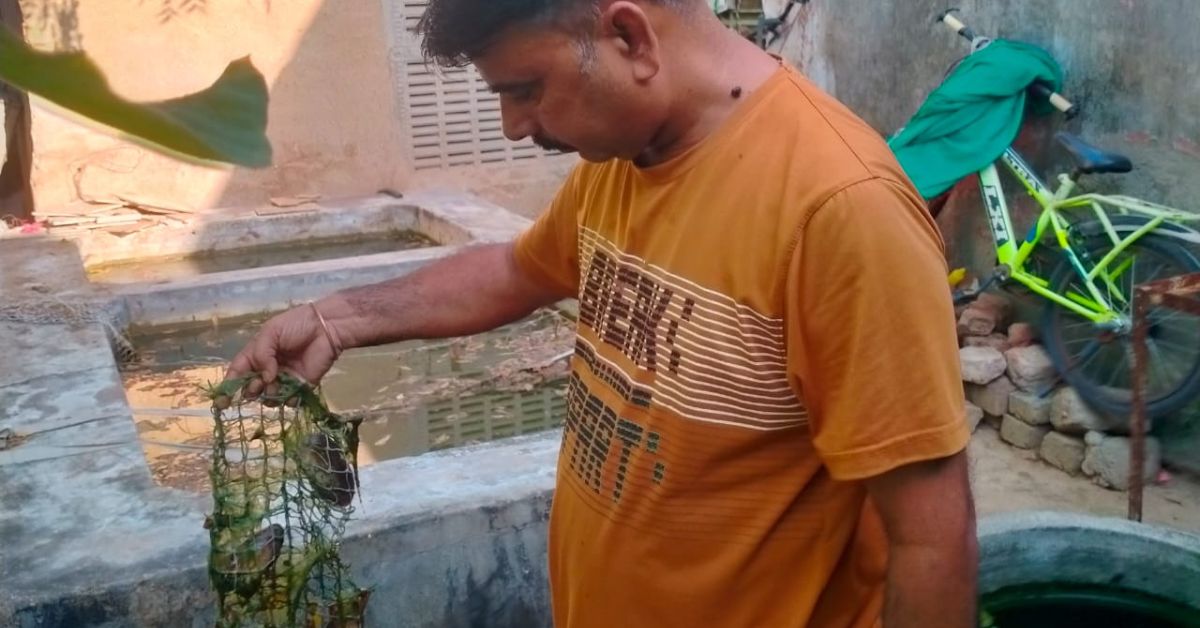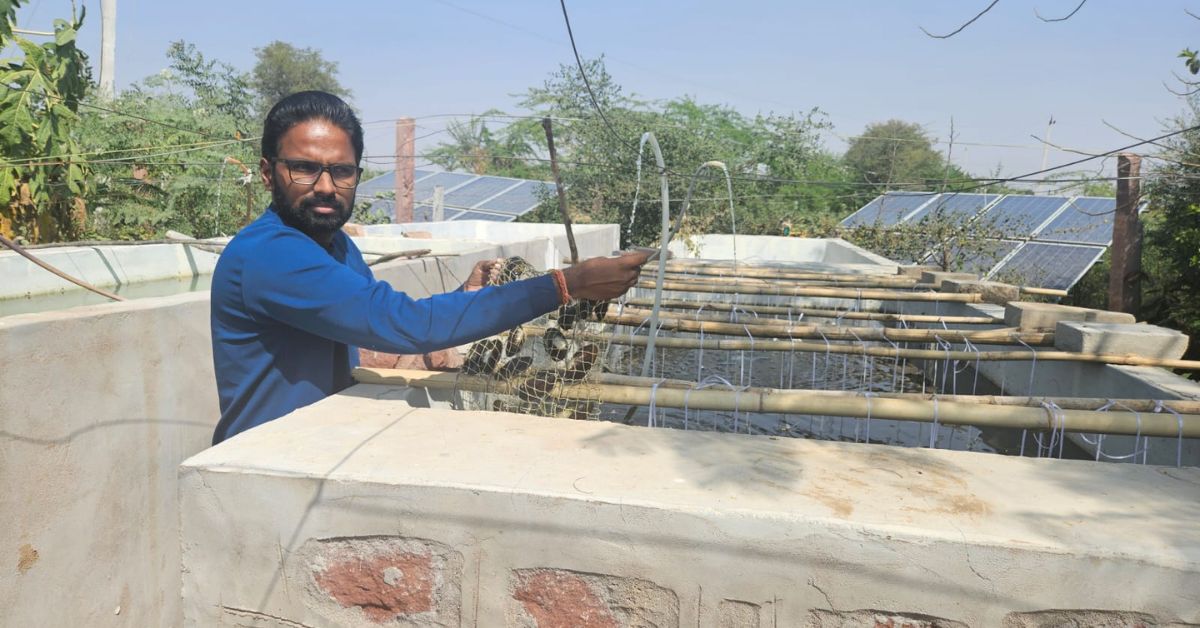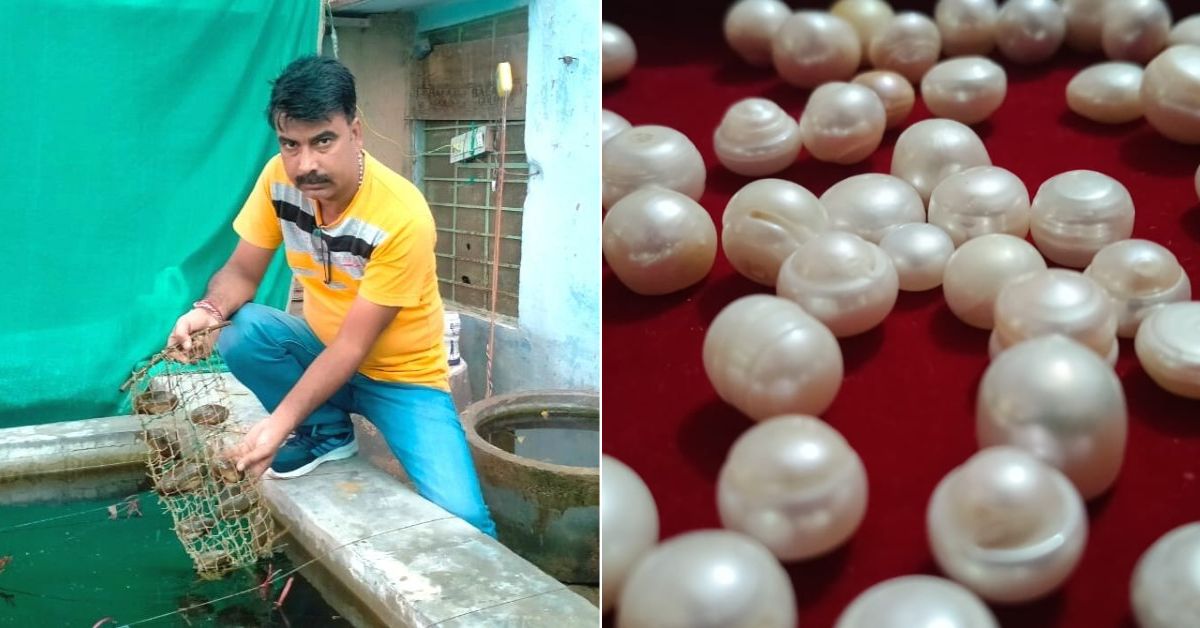A decade ago, as Narendra Kumar Girwa scrolled through YouTube in search of videos on terrace farming, an inadvertent typo directed him to the intriguing world of pearl farming. This chance encounter piqued his curiosity.
Despite Rajasthan’s climate and agricultural traditions focused on wheat, bajra (pearl millet), and jau (barley), Narendra saw potential in cultivating pearls, which had a robust demand and lucrative market rates in India.
Before this unexpected turn, Narendra’s life was steeped in uncertainty.
Raised in a middle-income family with five siblings in Kishangarh Renwal of Jaipur district, he had no land or agricultural background. After graduating, he opened a bookstore near schools and colleges — a prime location for his stationery business.
For eight years, business was good until his landlord asked him to vacate the shop. “I was running the bookstore for eight years in the same location. All of a sudden, my landlord asked me to vacate the premises. He wanted to make way for his son to establish a business in the same spot. So, I had to vacate the shop. I took another shop on rent, about half a kilometre from the old location, but I wasn’t getting good customers there,” Narendra tells The Better India.

Forced into a less advantageous location, he struggled to attract customers, leading to significant financial losses — amounting to Rs 4–5 lakh. The business drained his savings, and despite his wife’s support through her earnings from stitching clothes, their financial health deteriorated rapidly.
Disheartened, Narendra found himself at a crossroads.
Transforming setbacks into stepping stones
While browsing online for new opportunities, his accidental discovery of pearl farming videos signalled a possible escape from his financial troubles. Intrigued, he began researching this unconventional farming practice thoroughly. Although the idea seemed outlandish in Rajasthan’s dry climate, many mocked his interest, including his own family.
“They feared the local land was unsuitable for such endeavours. People also said I have gone crazy,” he laughs.
However, Narendra was determined to prove otherwise.
An invaluable resource in his quest was the Central Institute of Freshwater Aquaculture (CIFA) in Odisha. Here, Narendra found the training he needed to pursue his new passion. For a fee of Rs 6,000, he learned the nuances of pearl farming over a five-day course and gained insights into the delicate process of developing pearls within mussels.
Equipped with new knowledge and determination, Narendra ventured into the world of pearl farming in 2015. He purchased 500 mussels from Kerala and started freshwater pearl cultivation in this village.
His initial attempts were fraught with challenges, as Rajasthan’s climate posed significant obstacles, and a lack of local expertise left him to navigate largely alone. Within two weeks, his mussels started dying, one by one. Out of his first batch of 500 mussels, only 35 survived due to unforeseen issues with ammonia levels. “I had failed miserably,” he says with a sigh.
But Narendra was undeterred by failure. He recalibrated his strategy, investing time in understanding pearl farming better. Overcoming losses of Rs 50,000, he refined his methods to improve survival rates and mastered the art of maintaining precise pond conditions.

After six months, he procured another 500 mussels. Through persistent experimentation and adaptation, within 18 months, his efforts started yielding promising results. By working tirelessly to balance environmental conditions within his ponds, he achieved a 70 percent survival rate among the mussels.
His button-shaped pearls possessed a unique lustre that captivated the market. Selling these pearls at Rs 300 each, his second batch produced a harvest of 700 pearls, earning him a lucrative income of Rs 2 lakh.
The success validated his risky venture and opened doors to new possibilities, solidifying his standing as a pioneering figure in Rajasthan’s nascent pearl farming industry.
Narendra’s own venture, now sprawling across 300 square feet with 3000 mussels, serves as a shining example of success. Generating 5000 pearls per cycle, he profits upwards of Rs 10 to Rs 15 lakh over 18 months. His pearls are sold through Amazon and retail markets, while his foray into pearl-based jewellery further diversifies his income.
As word spread of Narendra’s success, so did opportunities to educate and inspire others. Recognising a chance to help fellow farmers, he began offering training sessions. As of now, he has trained over 200 individuals from neighbouring states — Madhya Pradesh, Gujarat, and Uttar Pradesh. Charging Rs 4,000 for two-day workshops, he provided comprehensive training and continuous support and fostered a nascent community of pearl farmers.
Jodhpur’s Aditya Kachawa underwent training with Narendra last February. Reflecting on his experience, he shares, “The training provided detailed explanations in an excellent manner. The best part is that Narendra ji is incredibly helpful and always available to answer questions through any mode of communication.”

He continues, “I manage several farming projects, including a nursery and mushroom cultivation, and had some unused land. I wanted to make the most of it, so I currently have 1,000 pearl mussels in my cemented pond. Even after the training, Narendra offered ongoing support to help me establish my pearl business.”
Despite invitations to share his expertise globally — from Dubai to Bhutan and London — Narendra stayed focused on local impact, even assisting pearl pond setups abroad, such as in Nepal.
Secrets to freshwater pearl farming
For those inspired by Narendra’s journey, he advocates a step-by-step approach to pearl farming.
1. Source good quality mussels from renowned vendors. About 10 percent of losses are estimated during transportation. To keep mussels healthy during transportation, make sure that you keep them in a wet jute sack. As it takes two to three days for transportation, sprinkle water on the cover when it starts drying up.
2. Farmers can start by first setting up a 10×15-foot pond. This area is suitable to hold 1,000 mussels. Even those lacking large land plots can succeed by setting up smaller ponds on the terraces of their homes.
3. Narendra emphasises maintaining zero ammonia levels. This can be achieved by deploying motors of water coolers that rotate water in the pond. Use the motor for two to three hours daily.
4. Understanding Rajasthan’s unique climate, Narendra digs his ponds five feet deep to regulate temperature, ensuring mussels thrive, even in the summer heat. He advises maintaining a temperature between 10 and 30 degrees. By leveraging green shades, he maintains critical temperature stability, facilitating productive harvests from October to March.
5. Under optimal conditions, with a 70 percent mussel survival rate, farmers can earn up to Rs 4 lakh from 1,400 pearls. Narendra also advises turning shell waste into handicraft items to earn an extra income.
Edited by Megha Chowdhury; All images courtesy Narendra Girwa
